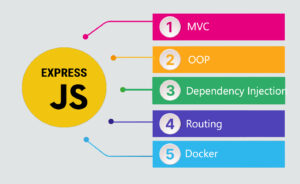Continuous Integration and Continuous Deployment (CI/CD) have become essential practices for businesses aiming to deliver software efficiently, reduce time to market, and ensure higher quality. Yet, surprisingly, many companies, especially small-to-medium enterprises (SMEs) and traditional industries, are missing out on the full benefits of CI/CD. The primary barrier? A lack of knowledge and understanding of how CI/CD can transform their development processes and what’s required to implement it effectively.
Understanding CI/CD: A Brief Overview
- Continuous Integration (CI) involves developers frequently merging their code changes into a shared repository, where automated tests run to catch issues early in the development process. This approach helps ensure that code changes integrate seamlessly, and issues are identified quickly.
- Continuous Deployment (CD) automates the process of deploying code to production, enabling faster and more frequent releases. With CI/CD in place, teams can release new features, fixes, and updates in small, manageable increments, allowing them to respond more rapidly to user feedback and market demands.Why Companies Are Missing Out on CI/CD
Lack of Awareness of CI/CD Benefits
Many organizations, particularly those without a strong tech focus, are not fully aware of the competitive advantages CI/CD offers. Executives may not see how CI/CD aligns with their business goals or how it could lead to significant savings in time, resources, and costs. The perception is often that CI/CD is only relevant for large, cutting-edge tech firms, rather than a tool that could improve agility, quality, and reliability for companies of any size.
Insufficient Technical Knowledge
Implementing CI/CD requires a blend of development and operations skills, often referred to as DevOps. Smaller companies or traditional IT teams may lack expertise in automation, scripting, containerization, and cloud environments—all of which are commonly used in CI/CD workflows. This knowledge gap means teams often don’t know where to start or which tools and processes are necessary to build a successful CI/CD pipeline.
Fear of Complexity and Cost
There’s a common misconception that adopting CI/CD requires a large initial investment in tools, infrastructure, and training. Companies might worry that moving to CI/CD will require a complete overhaul of their current systems, resulting in downtime and high costs. However, while CI/CD does require an initial setup and learning curve, there are many open-source and cost-effective tools that make implementation feasible for organizations of all sizes.
Concerns Over Security and Compliance
For companies in highly regulated industries (e.g., finance, healthcare), security and compliance concerns can be a barrier to CI/CD adoption. Automating deployments to production can feel risky if companies lack the experience to implement necessary safeguards, like automated testing, role-based access controls, and audit trails. These companies may be unaware that many CI/CD tools offer robust security features and can even enhance compliance by standardizing deployment practices.
The Benefits Companies Are Missing Without CI/CD
- Faster Time to Market: CI/CD enables companies to release features and updates more frequently, allowing them to respond to customer needs faster. This rapid iteration can be a major competitive advantage in today’s digital-first environment.
- Improved Product Quality: Automated testing and continuous monitoring ensure that bugs and vulnerabilities are identified early, before they reach production. This results in higher-quality products and a better user experience.
- Enhanced Collaboration and Productivity: CI/CD encourages a culture of collaboration between developers and operations teams, reducing bottlenecks and creating a more efficient, unified workflow.
- Reduced Manual Errors: Automation reduces the chances of human error in repetitive tasks, such as testing, integration, and deployment. This consistency ensures a stable and predictable release process.
Overcoming the Knowledge Barrier
Investing in Training and Upskilling
To close the knowledge gap, companies should invest in training programs that equip their teams with the necessary skills for CI/CD. Many online platforms offer courses and certifications in CI/CD, DevOps, and cloud technologies that are accessible to individuals and teams alike.
Leveraging Expert Consultation
Bringing in external experts or consultants can help companies design and implement CI/CD pipelines tailored to their needs. Consultants can provide best practices, tools recommendations, and templates, helping companies get started faster while avoiding common pitfalls.
Starting Small with CI/CD Tools
Companies don’t need to commit to a full-scale CI/CD transformation right away. Many businesses find success by starting small—perhaps by implementing CI for a single project and automating a few critical tests. Tools like GitHub Actions, GitLab CI/CD, and Jenkins offer free or low-cost options to experiment with CI/CD in a controlled, low-risk way.
Educating Leadership on CI/CD Benefits
To build support for CI/CD, it’s crucial to educate leadership on the tangible benefits it can bring. Case studies from similar industries, success stories, and data on time and cost savings can help make a compelling case for CI/CD investment.
Using Incremental Approaches
For companies that are particularly risk-averse, taking an incremental approach to CI/CD can be helpful. This might involve automating unit tests first, then gradually adding integration tests, deployment scripts, and finally full continuous deployment. This phased approach allows teams to build confidence and skills over time, reducing the perceived risk of CI/CD.
Conclusion
CI/CD is more than just a buzzword; it’s a transformative approach that enables businesses to improve software quality, speed up release cycles, and stay competitive. The knowledge barrier is real, but it’s not insurmountable. By investing in education, starting small, and leveraging available resources, companies of all sizes can begin to realize the benefits of CI/CD. Those who continue to overlook CI/CD due to lack of knowledge risk falling behind in an increasingly software-driven world. Now is the time to bridge the gap and embrace the future of efficient, agile software development.



